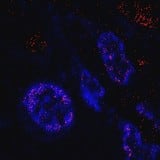The request, submitted by the minister for health, Marisol Touraine, and agriculture minister Stéphane Le Foll comes on the back of a study published on Friday (20 January) in Scientific Reports.
The study's authors from France’s National Institute for Agronomic Research (INRA) said they have shown, for the first time in an in vivo setting, that titanium dioxide crosses the intestinal barrier and passes into the bloodstream, reaching other parts of the body. They found nano-sized particles in the animals’ livers, the absorption of which has been linked to immune system disorders.
However, Touraine, Le Foll and the team of researchers urged caution in interpreting the findings, saying: “At this stage, the results of the study do not make it possible to extrapolate these findings to humans.”
Listed as E 171 in Europe, titanium dioxide (TiO2) is used to whiten or give an opaque, cloudy effect in foods and is mainly used in confectionery (such as chewing gum), bakery and sauces. It is also a principal component in sun cream as it reflects UV light, and is added to toothpaste and paint.
The UN's International Agency for Research on Cancer (IARC) has classified it as a possible human carcinogen.
French food industry association ANIA reiterated this and called for the debate to be centred around "objective, complete and rational information".
Its scientific and regulatory officer Esther Kalonji said: "All ingredients used and products manufactured by agri-food companies are subject to numerous checks and evaluations by the competent public authorities [and] therefore the products currently on the market are safe to be consumed and do not represent a danger to consumers."
ANSES has until March this year to publish its evaluation.
First time results
The researchers gave rats 10 mg of titanium dioxide per kilogram of body weight each day through drinking water for 100 days – a dose similar to the average human exposure through food.
In the group of healthy rats exposed to E171, four out of 11 spontaneously developed preneoplastic lesions – a non-malignant stage of carcinogenesis – in healthy rats while the control group

presented no anomalies. The food colouring also sped up the development of existing lesions in a second group of rats.
“These results indicate that E171 both initiates and promotes the early stages of colorectal carcinogenesis in animals. These studies show for the first time that the additive E171 is a source of titanium dioxide nanoparticles in the intestine and the entire body, with consequences for both immune function and the development of preneoplastic lesions in the colon.”
The findings justify the need for a carcinogenesis study to continue observations at a later stage of cancer, and provide new data for evaluating the risks in humans, according to a statement released by INRA.
Nano no-no
For the rat study, the INRA scientists looked at the colouring as a whole, which is made up of both micro- and nanoparticles.
Titanium dioxide a naturally-occurring metal oxide and is one of the five most common engineered nanomaterials used in daily consumer products, including food, according to a 2012 study.
According to a Commission recommendation dating from 2011, a compound containing at least 50% nanoparticles ranging from 1-100 nanometres is considered to be nanomaterial.
The titanium dioxide samples used by the researchers were (just) below this level.
"Our own study today clearly shows up to 45% of nano-sized titanium dioxide particles in the E 171 sample given to rats," director of research at INRA Eric Houdeau told us.
EFSA to consider relevance 'in due course'
In September last year, the European Food safety Authority (EFSA) said in a scientific opinion that current levels of dietary exposure of titanium dioxide posed no health concerns, even though it was unable to set an acceptable daily limit (ADI) due to data limitations.
However, it called for research to fill these data gaps, particularly on the potential effects on the reproductive system which had been flagged as a risk by “a small number” of studies.
A spokesperson for EFSA told FoodNavigator it was aware of the study and would consider its relevance "in due course".
Source: Scientific Reports
“Food-grade TiO2 impairs intestinal and systemic immune homeostasis, initiates preneoplastic lesions and promotes aberrant crypt development in the rat colon”
First published online 20 January 2017, DOI: 10.1038/srep40373
Authors: Sarah Bettini, Elisa Boutet-Robinet, Christel Cartier, Christine Coméra et. al.
